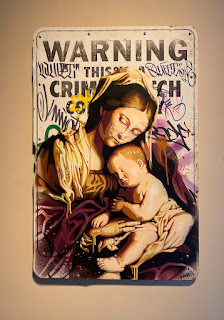We watched the hour and a half documentary on HBO called “Four Hours at the Capitol”, really an incredible piece of reporting. I would highly recommend seeing this program when it streams. Even if you feel you know what happened on that dreadful day, which will go down in infamy, but most especially if you believe the fiction that January 6, 2021 was a normal day at the Capitol.
The program was based on records of photographers and videographers present on January 6, private individuals and reporters, including at least one from the New York Times. The quality of the images and sound was far better than the rough clips we have seen on the news and they were edited into a coherent sequence.
The documentary starts with the crowd from the main trump rally on the lawn in front of the Capitol where we see the “Proud Boys” and other groups of that ilk. There is even one participant in a wheelchair commenting on the process as the group turns into a mob and they march toward the Capitol. Each time they move forward there are Capitol Police trying to hold barricades up until the rioters are hitting Police over the head with the barricades. Once inside you see a few individuals not sure where they are going before the violent crowd assaults the Capitol tunnel.
One thing I am sure of is that no matter what I believed I would not storm the Capitol in order to harm those who were in there. Even if I were somehow dragged into the Capitol, I would be careful of its architecture and its historic art commissioned for the Capitol and works left behind by former presidents. The headline of an Artnet article by Sarah Çascone read, “The Curators of the US Capitol Art Collection Say They Need $25,000 to Fix Paintings and Statues Damaged in the January Attack”.
As I was writing this, I went out to pick up my lunch and as I was walking down a main street here in Santa Fe, which is fundamentally a liberal town, a pickup truck drove by with a large banner flying from the truck bed that read “F…k Biden”. Is that what this country is coming to? If not insurrection, then anarchy (a state of disorder due to absence or nonrecognition of authority)? Or autocracy like the competing world powers of Russia and China?
Even if you don’t agree with my politics, I think you will agree that If no one can tell the truth anymore and be believed, the result will be the collapse of our democratic government. The HBO program “Four Hours at the Capitol” presents the evidence of how close we came on January 6.
 |
| The House Chamber in the Capitol 1-6-2021 |

















